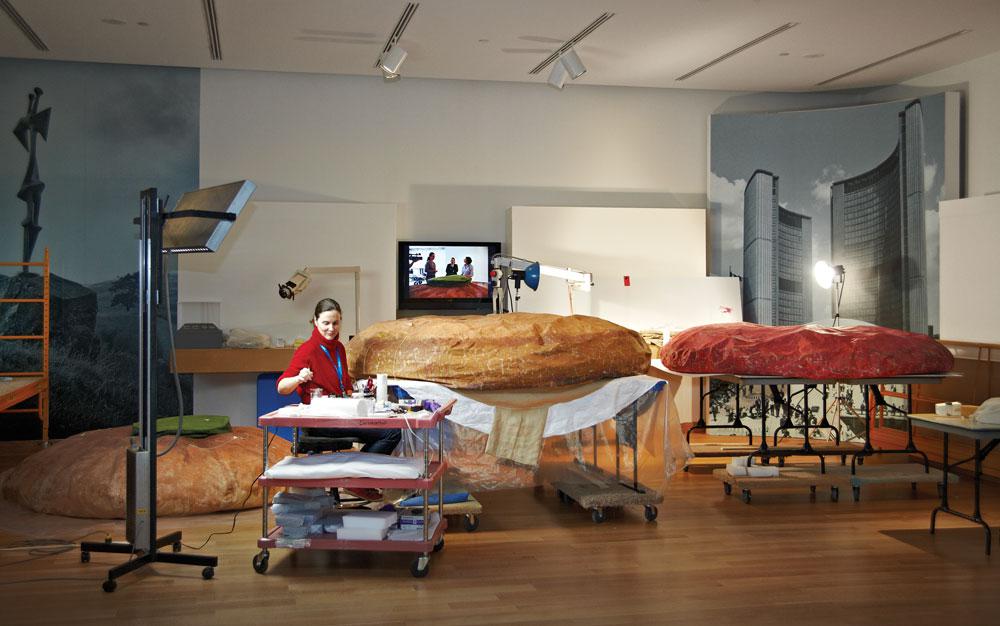For the New York run of the touring Claes Oldenburg exhibition that opens at the Museum of Modern Art in April, the Art Gallery of Ontario agreed to lend its iconic Oldenburg soft sculpture Floor Burger (1962). In the run-up to the loan, the AGO decided to publicly exhibit the conservation treatment I was doing on the Burger. We thought of it as a chance for visitors to see the kind of work that is usually performed behind the scenes.
Floor Burger, of course, has a penchant for attracting the public eye. The piece came into the gallery collection in 1967. Outcry in Toronto over a recent purchase of Henry Moore’s Archer (1964–65) for City Hall was still fresh, and the gallery felt the need to issue a press release explaining that no taxpayer money was spent on Floor Burger. The release did nothing to allay skepticism and derision, and even a public protest—by Central Technical School students and teachers, who paraded an oversized ketchup bottle outside the gallery. Torontonians thought Floor Burger transgressed accepted standards of what art should be.
The purchase is now thought prescient. Oldenburg is an undisputed modern master, and Floor Burger has become one of the most beloved pieces in the AGO collection. But it is also a fragile one, which is why the loan has been limited to the exhibition’s New York venue. Fragility can be a consequence of materials aging and changing, and conservation processes are often about managing that change. Thanks to funding assistance from MoMA and American Express, Floor Burger is receiving the attention it needs to make the trip safely.
Since the work came out of the vault and went on view last fall, we have noted that the canvas forms of Floor Burger are still supple and holding up. The interior is made of polyurethane foam chunks and ice cream cartons, and while the boxes are faring well, the foam is slowly deteriorating. A little supplemental foam has been added to help preserve the burger form; eventually, it will all need to be replaced. We took paint samples and sent them to the Canadian Conservation Institute in Ottawa for analysis in an effort to identify and better understand the materials: the paint layers are cracked and lifting overall, with extensive losses, as it is difficult for an inherently less flexible paint film to adhere to a flexible support. Meticulous application of a consolidant will help retain the remaining paint layers, and selected surface cleaning will help brighten and improve the visible areas of the bun and pickle, which have been clouded by accumulated dust and grime. Overall, the treatment is straightforward but time-consuming, given the enormous surface area.
Working in public view has brought about an accumulation of informal oral history. The vast majority of visitors who stop to talk to me mention that Floor Burger is the only artwork they remember from childhood school trips. Some visitors come specifically to see the piece again, and bring along a child or grandchild. Others remember the protests or the anger art-school instructors once expressed over the acquisition. Fifty years later, however, any anger now stands behind understanding and acclaim.
Sherry Phillips is a conservator at the Art Gallery of Ontario.
This article appeared in the Spring 2013 issue of Canadian Art. To read more from this issue, please visit its table of contents.

 AGO conservator Sherry Phillips at work on Claes Oldenburg's Floor Burger / photo courtesy Art Gallery of Ontario
AGO conservator Sherry Phillips at work on Claes Oldenburg's Floor Burger / photo courtesy Art Gallery of Ontario







